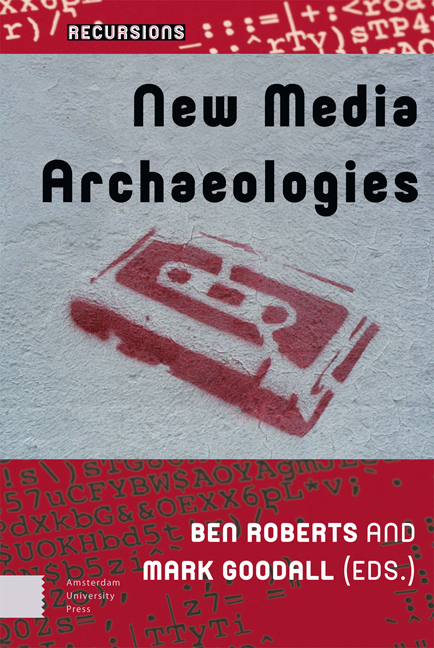9 - Inventing Pasts and Futures: Speculative Design and Media Archaeology
Published online by Cambridge University Press: 21 November 2020
Summary
Abstract
This chapter aims to put imaginary media research and speculative design in conversation; what does it mean to think of media archaeological and imaginary media projects in the context of speculative design? This earlier missing discussing of the two parallel fields sets out to investigate critical methods in speculative practices across media and design with a special angle to imaginary pasts. Both speculative design and imaginary media research are interested in how alternative worlds might be created and how both temporal, social, and technological tabulations situate coordinates of past-future in alternative ways. The chapter addresses different art and design projects, cross-fertilising the two traditions of media and design theory and practice, and aims to elaborate ways how media archaeology could contribute to speculative design and hence contemporary issues in critical design.
Keywords: Imaginary media, speculative design, design fiction, art practice, practice-based research
Introduction: Imaginary Media as Impossible Yet Necessary Techniques
To be able to start with the non-existent, sometimes even the absurd, is a skill in itself. It can be a methodological way of approaching reality not as ready-made and finished, but as produced and open to further variations, potential, and a temporality that includes the possibility of something else. Like with all methods, the skill of thinking the non-existent needs practicing. It also needs institutional contexts that are able to support such an odd task that seems devoid of actual truth-value and easily dismissed as not incorporating the epistemological seriousness required of the academic subjects.
Despite the difficulty of giving a good one-liner definition that could cover all aspects of different traditions of media archaeology, it is safe to say that it has been able to create an identity as a field interested in the speculative. This has meant many things from mobilisation of media history executed by way of surprising connections across art, design, technology, and architecture to acknowledging the unacknowledged, a sort of a search and rescue-operation for devices, stories, narratives, uses, and misuses left out of the earlier registry. Archaeology has been sometimes used as a general term for the way in which we investigate the conditions of existence of media culture, and the media technical conditions of existence of cultural practices – two things that are closely connected, with the two aspects in co-determining relations: media technology and cultural practices. And it also bends our notions of history and time itself.
- Type
- Chapter
- Information
- New Media Archaeologies , pp. 205 - 232Publisher: Amsterdam University PressPrint publication year: 2019



